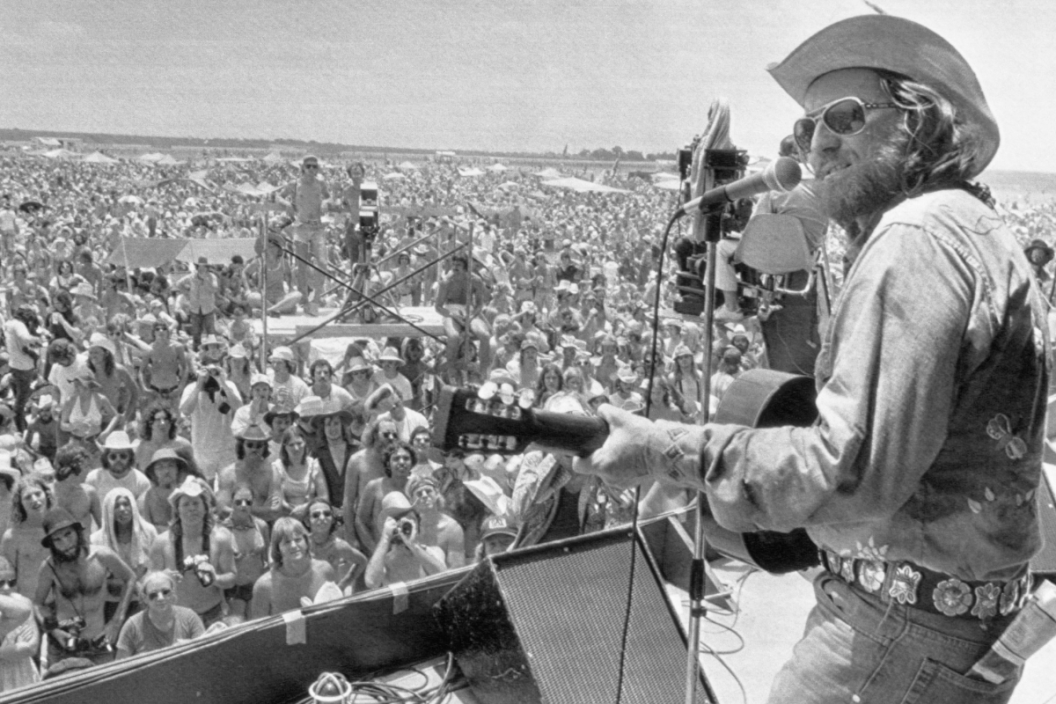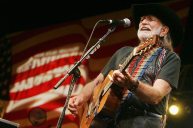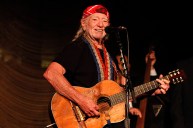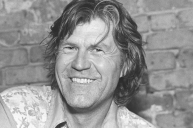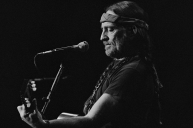July 4th in Texas is practically synonymous with Willie Nelson's 4th of July Picnic. The event has been a part of the culture of the Lone Star State- on and off - for over 40 years. But beyond being a great party with some of country music's greatest icons, the picnic helped give birth to the outlaw country movement that changed the state and country music forever.
This year, the Independence Day party returns; The 2022 4th of July Picnic will feature Willie Nelson & Family, along with Jason Isbell & the 400 Unit, Charley Crockett, Allison Russell, Brothers Osborne, Midland, Steve Earle & the Dukes, Asleep at the Wheel and more will perform at Austin's Q2 Stadium. See the full lineup here.
Take a look back at Texas' biggest party and how it all came together.
The Family Reunion
In 1972, Willie Nelson was fresh from Nashville. He had been spending time in his home state after his Tennessee home was destroyed in a fire. He had grown tired of Nashville suits overproducing his records and was eager to start over far from Music City. Then he heard about a gig in Dripping Springs.
The site was Hurlbut Ranch, an unassuming plot of land along Hwy. 290 just west of Dripping Springs. Dallas promoters had their heart set on creating a "Hillbilly Woodstock," investing $250,000 into the event. It was called the Dripping Springs Reunion.
While the reunion is now remembered for its gathering of hippies and rednecks converged in the Texas Hill Country to see Waylon, Willie and the rest of the redneck rock brigade, the actual lineup was far more conservative. The reunion assembled country legends like Earl Scruggs, Tom T. Hall, Tex Ritter and Roy Acuff.
Missing from the list of names on the much touted lineup? Willie Nelson. Even though he was one of the most sought after songwriters in Nashville, Nelson hadn't earned top billing just yet (at least in the eyes of the promoters). The long-haired Red Headed Stranger we now know and love was still sporting short hair and a golf cap.
'Hillbilly Woodstock'
Both the promoters and national media expected the Dripping Springs Reunion to have a massive turnout. (Rolling Stone even sent Annie Leibovitz to snap photos of the event.) But in terms of attendance, the reunion was kind of a bust. Organizers expected 60,000 people a day. Between 7,000 and 10,000 showed up at the reunion, which ran from March 17 through the 19th.
But the Dripping Springs Reunion is remembered because of what it inspired. It further proved that country music wasn't as straight laced as Music Row assumed. It showed that there was a hunger for country songs that Nashville wasn't offering.
One of those songs was by a young songwriter named Billy Joe Shaver. When Waylon Jennings heard Shaver sing "Willie the Wandering Gyspy and Me" backstage at the reunion, he knew on the spot that he'd record the song.
And when clean cut Willie was hanging out backstage with his friends, watching guitars being passed around and listening to songs sung, he realized he didn't need to be in Nashville to make the music he wanted to make. In fact, he needed Texas.
The Inaugural Picnic
In the months following the reunion, Willie Nelson's star continued to grow in Texas and beyond. Gigs at progressive country hubs like the Armadillo World Headquarters had made him the face of Austin's growing music scene. He was free to do whatever he wanted. And what Willie wanted was to throw a massive 4th of July celebration in the Texas Hill Country with all of his closest friends.
Nelson decided the same Dripping Springs ranch should be the site for the inaugural 4th of July Picnic. Inspiration struck Willie in early summer of 1973, which only left a weeks to organize the massive event. Incredibly, Willie's crew pulled it off and 40,000 people attended the one-day event.
The lineup included Waylon Jennings, John Prine, Tom T. Hall, Doug Sahm and Kris Kristofferson.
A Brief History of the Traveling Picnic
Despite being a Lone Star State tradition, Willie's picnic hasn't really stayed in one spot for long. Here's a rundown of some of the notable venues that have hosted the celebration.
College Station, 1974
In 1974, the picnic moved to College Station at the Texas World Speedway. The event is especially notable for the parking lot fire that broke out, destroying a young Robert Earl Keen's car. (The car going up in flames is on the album cover for Keen's album Picnic.)
Liberty Hill, 1975
The picnic was held in Liberty Hill in 1975. Apparently, several attendees messed with Texas, leaving litter scattered across the grounds. Willie was fined $1,000 for violating the the state's Mass Gatherings Act.
Gonzales, 1976
The 1976 picnic in Gonzales is one of the largest in history, with more than 80,000 people in attendance. Unfortunately, the three-day festival was racked with controversy. More than 140 people were arrested and several assaults were reported. Willie was even sued by a couple of the injured attendees. Perhaps due to the Gonzales fiasco, Willie moved the picnic outside of the state for the next couple of years.
Luckenbach, 1995 - 1999
After the picnic bounced around sites from Tulsa to Kansas City to Willie's own Pedernales Country Club, the event found a new home in Luckenbach from 1995 through 1999. In '96, Waylon Jennings made his only trip to the small town he helped make famous.
Spicewood, 2003
In 2003, the picnic was held at Two River Canyon outside Spicewood. The event was a success, but a massive traffic jam on Texas 71 caused by concert goers was a deal breaker for several would-be attendants.
Billy Bob's Texas, 2004
In 2004, Willie moved the party to to the Fort Worth Stockyards behind Billy Bob's Texas. Finally, there was real air conditioning just a few feet away— a novelty for the picnic. The large condensed crowd was a challenge for downtown Fort Worth but the picnic came back to the Stockyards for two more years.
Austin 360 Amphitheater, 2016
From 2016 through 2019 the Picnic was held at Austin's 360 Amphitheater.
Q2 Stadium
2022 will mark the first year the Picnic will be held at Austin's Q2 Stadium, the home of the city's soccer team.
This article was originally published in 2017. It was updated on June 26, 2020.
